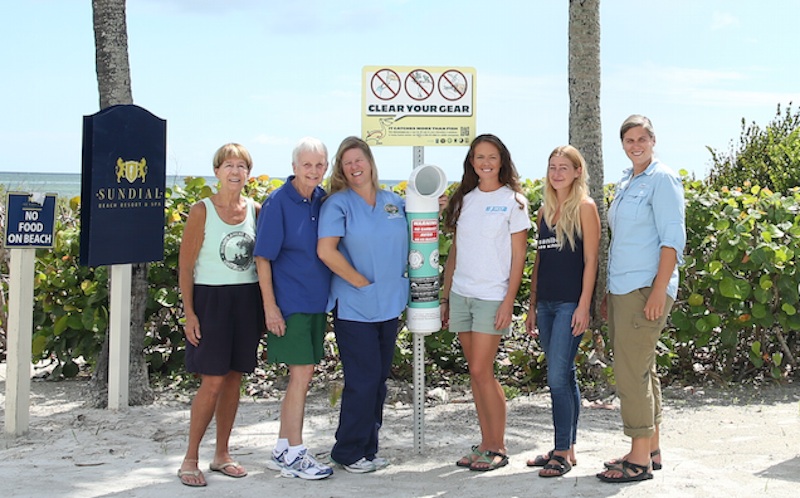Images of wildlife injured or even killed by monofilament line — plastic fishing line — are often tragic and heartbreaking. While the problem exists almost anywhere you can fish, it’s of particular concern in Southwest Florida with our abundance of marine life and activity.
Fortunately for wildlife, a group of seven Sanibel and Captiva conservation organizations came together a few years ago to address the ongoing problem and wildlife injuries caused by fishing line and gear left in the environment — including CROW (the Clinic for the Rehabilitation of Wildlife), Sanibel Sea School, J.N. “Ding” Darling National Wildlife Refuge, the “Ding” Darling Wildlife Society, the “Ding” Darling Monofilament Busters, the Sanibel-Captiva Conservation Foundation and the City of Sanibel Natural Resources Department.
The result is called “Clear Your Gear” and in 2016, the program officially launched with the placement of more than 20 monofilament collection centers on Sanibel and the Sanibel Causeway. The hope is that the program will be so successful reducing monofilament and wildlife injuries that it’ll expand across Southwest Florida
Each issue, “Take Five” poses five questions to a community leader or personality that have not previously been shared. Here, Dr. Heather Barron, Hospital Director for CROW, talks about the new organization and its importance to all of us — humans and wildlife — who share the environment.
Read this story online in its digital magazine format beginning page 16 here.
Describe the Clear Your Gear program.
It’s a collaborative that was born in 2014, when at CROW we noticed a 40% increase in the number of patients affected by monofilament over the two previous years. So I decided to get together with a number of other like-minded groups, and everyone thought it was a great idea. We were able to obtain a number of grants in 2015, and our program began.
What is your mission?
Our goal is to reduce as significantly as we can the amount of monofilament in the environment, because monofilament can last over 500 years. Doing so, we’ll have a better environment for fishermen and their crafts, and a safer environment for people and for wildlife.
What suffers the most from discarded monofilament?
Primarily sea birds, sea turtles and fresh water turtles are the patients we see the most at CROW, most commonly for hook and line injuries. We see a lot of really horrible things where line has been left out or gotten hung up in trees, and birds get caught or turtles get tangled.
How serious are the injuries?
They can be serious or of course deadly, but when people bring an injured animal to us immediately upon injury or early in the injury, we stand a much better chance to help them survive. The last couple of years we’ve seen over 100 injured or lost wildlife annually that have been caused by hook and line hazards.
What’s your best advice for safe fishing and preserving our wildlife?
That’s easy. Be aware to not discard monofilament line into the environment. Don’t feed the wildlife ever. And just be mindful to keep the environment as clean as possible, and be a good neighbor to wildlife. You can learn more about our program at www.clearyourgear.org.
— Story by John Sprecher | Photography by Milissa Sprecher

